Implementation and configuration of marketing automation can initially be complex and time-consuming, but the benefits it offers are well worth the extra effort. It’s important to remember that for Marketing Automation to be effective, we must have a database of individuals who have given us the necessary marketing consents, which is essential to ensure our actions comply with GDPR. The most effective method is our tactic no. 1, which not only helps expand the contact base but also effectively converts visitors into buyers.

Consumers today are not only aware of discount codes but actively expect them. Having a discount code is often a critical factor in a customer’s decision to spend money. Signing up for a newsletter in exchange for a discount code is the most common and obvious tactic. However, it’s crucial from the perspective of Marketing Automation. Not only does it help with conversion by providing a discount code, but it’s also the most common way we build our monitored contact database that has provided marketing consent. People who subscribe to our database can, of course, withdraw their consent at any time, but they rarely do. If we don’t overdo the number of messages we send them, they may stay subscribed for a very long time.
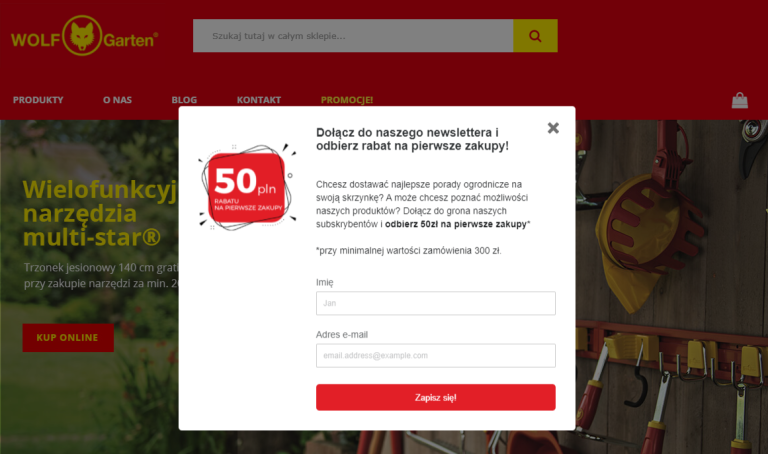
The most effective ways to gain newsletter sign-ups are pop-ups (pop-up windows with an email entry field), a top-of-page bar, and a sign-up widget in the website footer. These three locations ensure that visitors will encounter this information at least once while browsing the site and be aware that they can easily get a discount code for their order.

One great way to increase store turnover is cross-selling, i.e., selling additional products that may be related to the originally purchased item. If we have an efficient logistics system, we can even send the customer related product suggestions on the day of the order and inform them that if they buy these additional items within a certain time frame, everything will be packed and shipped together without increasing shipping costs. Alternatively, we can send an email with an offer for related products a few days or weeks after the transaction. A perfect example of cross-selling could be offering matching fashion accessories like shoes or a handbag from the same collection.
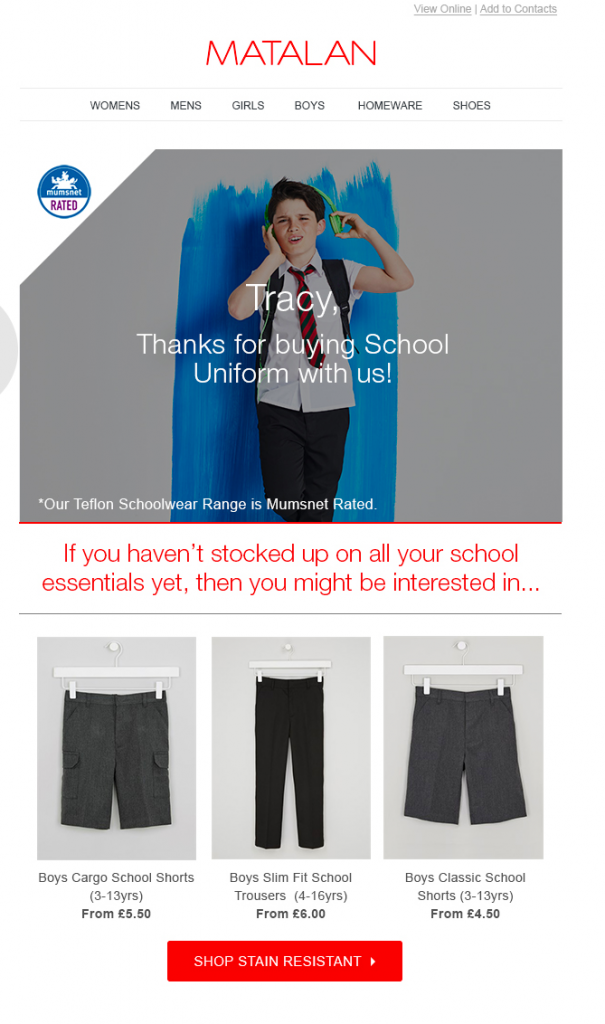
Cross-selling works on the principle of created (automatically or manually) customer segments, which are then matched to appropriate contacts. A set of pre-configured rules that monitor customer behavior in the online store ensures that segments grow continuously without the store owner’s extra effort, and pre-defined messages with dynamic product fields are sent automatically in the background.
Customer segmentation has more applications than just cross-selling. By properly configuring segmentation rules in the MA tool, we can, for example, create a segment of returning customers who have made more than two transactions and send them a personalized message thanking them for their loyalty, along with a dedicated discount code. Customers will appreciate such communication, which will translate into a positive attitude towards the brand in the long term.
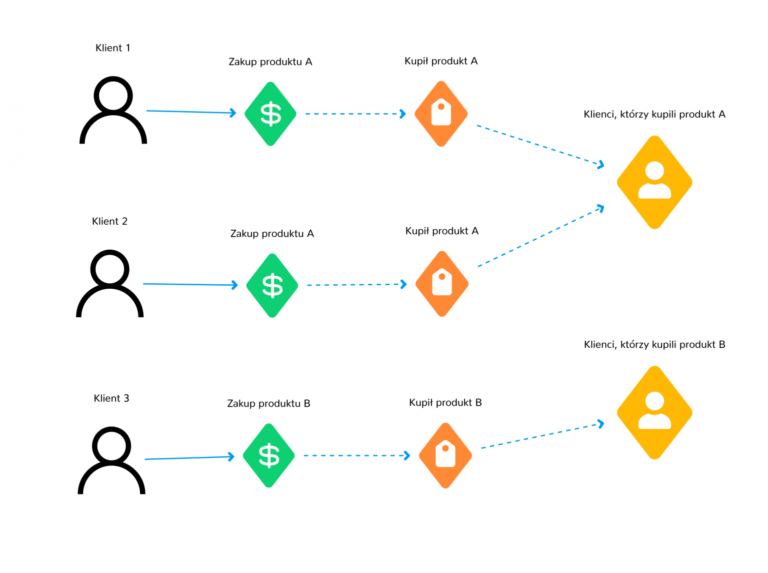
Segmentation of our customer database also works well as an additional analysis tool. This way, we can create segments of customers with higher cart values, those interested in specific products (by monitoring their visits to product pages), or customers who haven’t made a purchase for a long time.
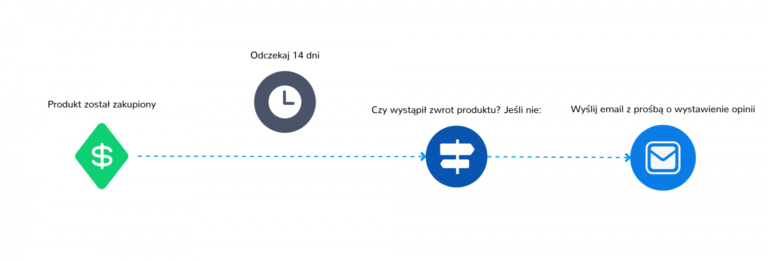
One of the more valuable automatic scenarios that should be included in your marketing automation strategy is the automated communication with customers who made a purchase some time ago but haven’t returned since.
A customer who has already placed an order with us is much more valuable than one who hasn’t bought from us yet. This is directly related to the trust we’ve already earned with the former customer.
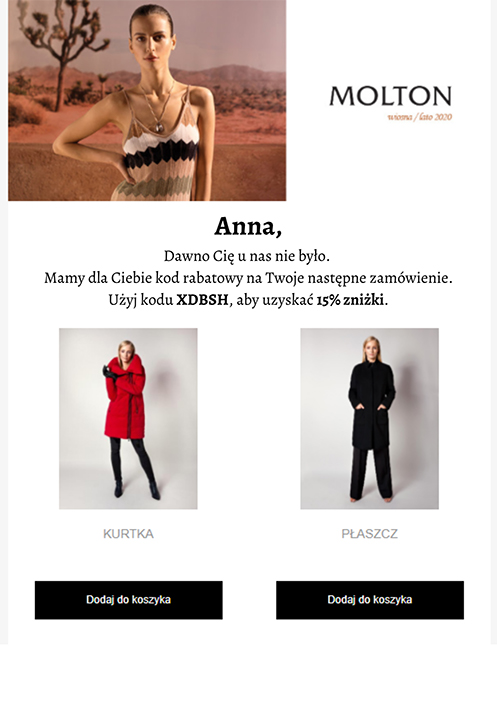
The customer likely remembers our brand, knows our online store, and is familiar with the ordering process. Therefore, if we offer them a good deal, they’re likely to make another purchase, increasing our segment of loyal customers who may eventually become brand ambassadors.

We’ve probably all experienced ads showing us products we’ve previously viewed, aiming to encourage us to return to the store and make a purchase. Customers in the consideration phase, comparing offers and reading product reviews, often need an extra motivator, the final argument to convince them to buy.
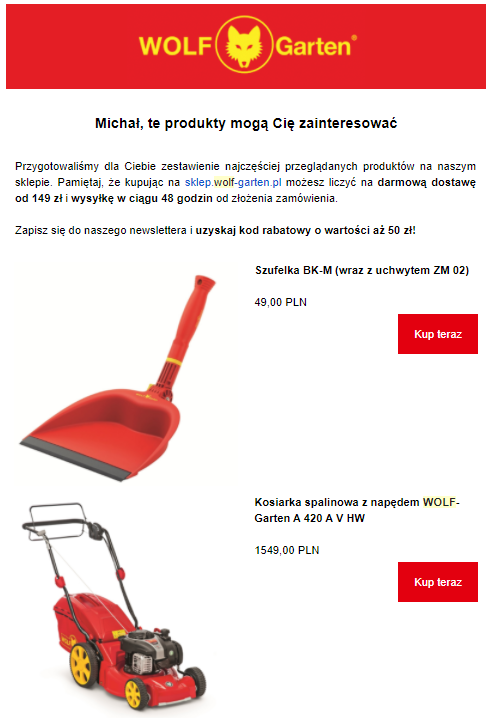
Marketing Automation offers excellent capabilities in this area. With the appropriate marketing consents, we can monitor which users (who have given consent) are viewing specific products. A dynamic remarketing scenario identifies these users and checks after a certain period if a purchase was made. If not, a good practice is to send these users an email with dynamic product fields showing the items they viewed. A particularly effective type of dynamic remarketing targets users who added a product to their cart but didn’t complete the purchase. This group is particularly valuable and worth reminding to finish the transaction.
We only need to set this rule once, and after testing its functionality, it can trigger automatically without our intervention, persuading customers to buy. Additionally, adding even a small discount code to this message may be the deciding factor that convinces the user to complete the purchase.

Well-thought-out, regularly sent newsletters containing interesting content can directly increase sales. It’s worth carefully planning the content of these communications and ensuring they aren’t purely promotional but provide valuable information to our recipients. In the gardening industry, for example, it could be a review of tasks to be performed in the garden at a particular time of year, along with suggestions for tools from our offer.

Fashion stores can showcase a new collection in the newsletter or feature customer-submitted photos of the most exciting outfits created using the brand’s products. The newsletter can also announce upcoming sales, inform about contests, or promote charitable activities. The main role of the newsletter is to maintain contact with the customer so that brand awareness never fades, and the customer remembers us when making purchasing decisions.
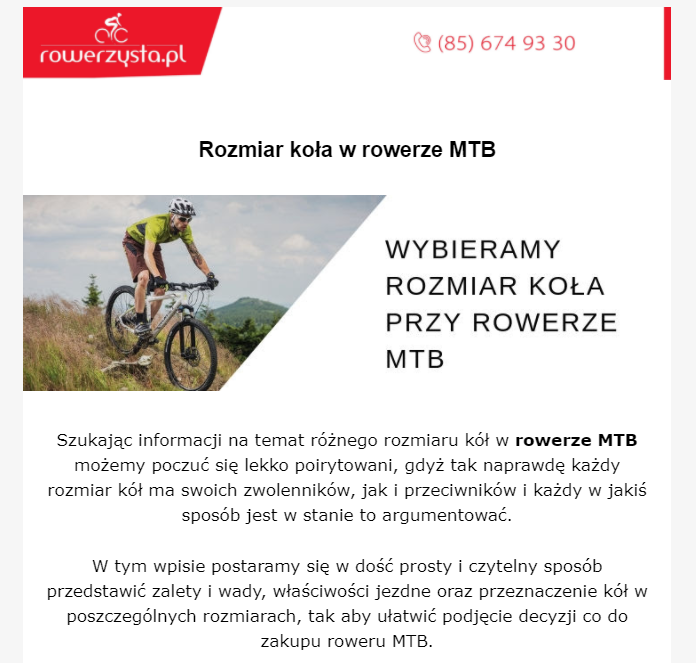

Tailoring content to the needs or interests of the right customer is one of the most effective marketing techniques. Marketing Automation gives us excellent opportunities to personalize not only email content but also website elements to display the appropriate content based on who’s browsing. The simplest example of such segmentation is showing a banner dedicated to men or women, depending on how Marketing Automation recognizes the user’s gender. Another use of this functionality could be offering a new product at a lower price, depending on whether the user has previously taken advantage of the offer.

The credibility of an online store is one of the key elements that influence its success. A lack of reviews on a Google profile, Facebook page, or a review site (e.g., Opineo.pl) can significantly impact a new customer’s purchase decision when they’re looking for information about the seller. Today, customers are increasingly aware of the risks associated with online shopping, and checking reviews is often an essential step in the purchasing process. Marketing Automation can help gather reviews where we need them most and build a positive base of product reviews.

A pre-configured scenario sends messages to customers who’ve purchased from us, asking them to leave a review. This can direct them to any platform, gradually filling our profiles with customer reviews. Additionally, we can protect ourselves from asking dissatisfied customers for reviews by excluding a pre-established segment of dissatisfied customers from this scenario.
The 8 applications of Marketing Automation presented are just a taste of what Marketing Automation can achieve. In a tool tailored to our needs, we can set up a wide range of activities. Most of these systems, in addition to automatically sending emails, offer SMS channels, Web-push notifications, data transfer to our database via API, and many other options. The possibilities are almost endless and limited only by our creativity. However, much depends on proper implementation and the effective configuration of action scenarios.
If you’re wondering whether Marketing Automation can help you generate additional revenue and whether it’ll be profitable, contact us, and we’ll recommend the best solution for your company.
© 2024 YETIZ INTERACTIVE Created with ♡ by Yetiz
PRIVACY BELEID